Epithelial Histology | Histology Home Page | Site Home Page
Stratified Squamous Epithelium
Stratified squamous epithelium is made up of multiple layers of cells where the superficial (apical) cells are flattened even though the more basal cells are square. Therefore, stratified squamous epithelium gets its name because the most apical cells (cells at the apex) are squamosal. Stratified squamous epithelium occurs where there is either constant friction or loss of cells such in places as the skin, the mouth and esophagus, and the vagina. Cells of the skin differ in that the cells in the outer layer of the skin have a hard protein called keratin in them. Therefore, the skin is made up of keratinized stratified squamous epithelial tissue. The cells of the mouth, esophagus and vagina lack keratin and are therefore unkeratinized stratified squamous. The outer layer of keratinized stratified squamous consists of dead cells and therefore you do not see the nuclei. This greatly with unkeratinized stratified squamous because the cells at the apex have nuclei.
Slides on this page were made by students between the spring of 2018 and the spring of 2020. Go through
the diffrent student pictures and compare them to your lab book picture. Slides 1, 4 and 9 are unkeratinized
and the rest are keratinized. Select 1 slide to draw on paper.
| Lab Book Image |
Student Images |
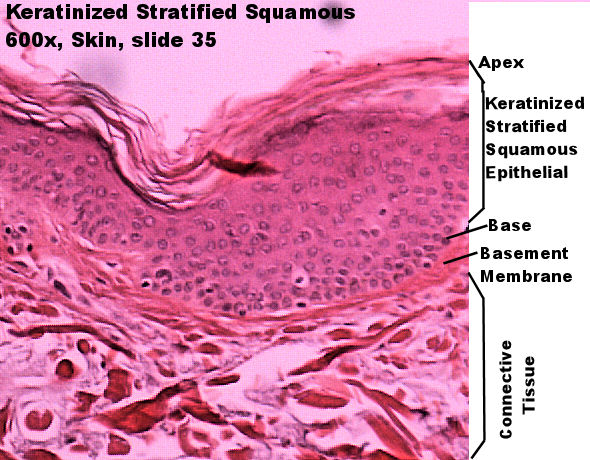
|
1 / 9
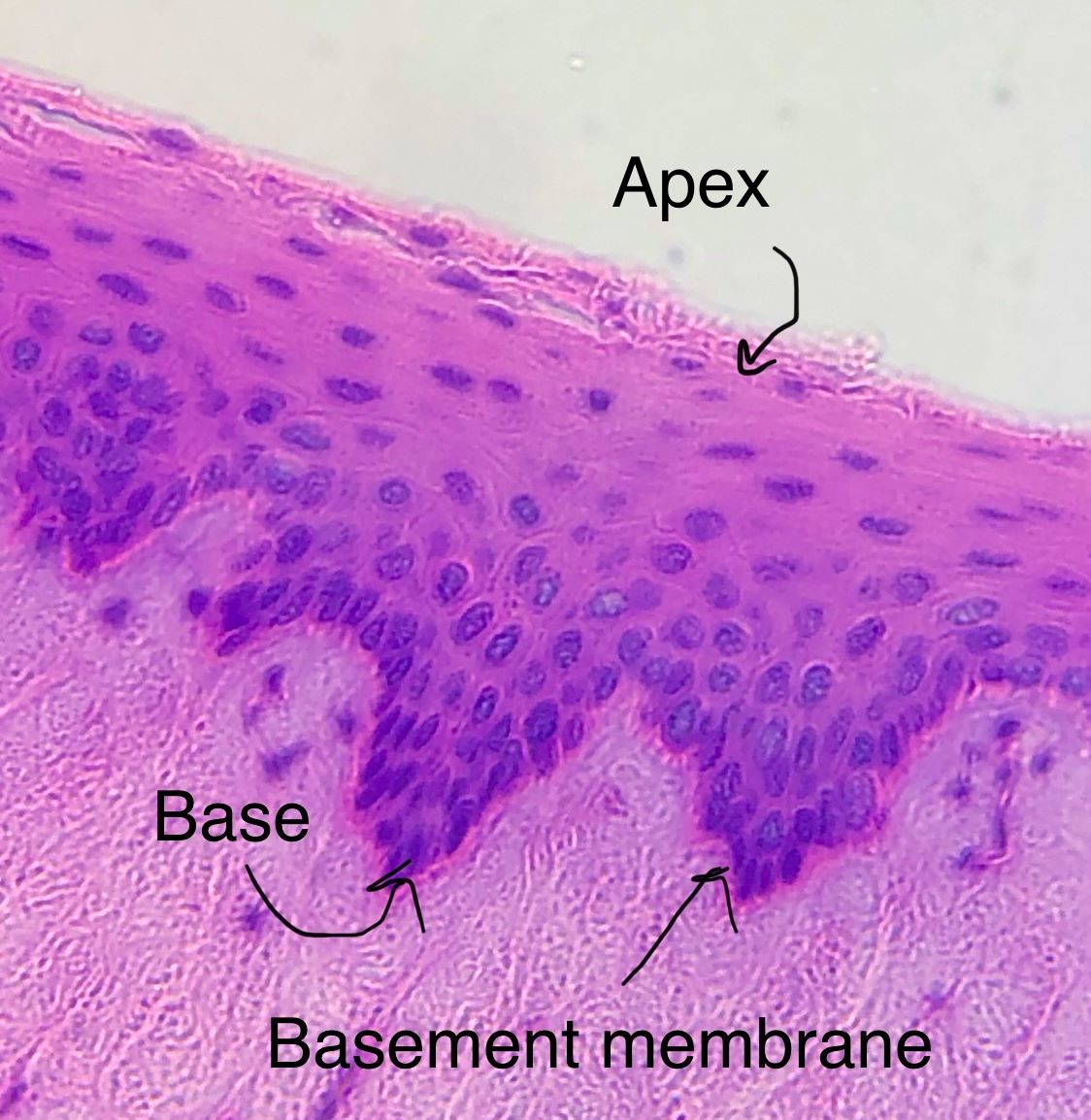
2 / 9
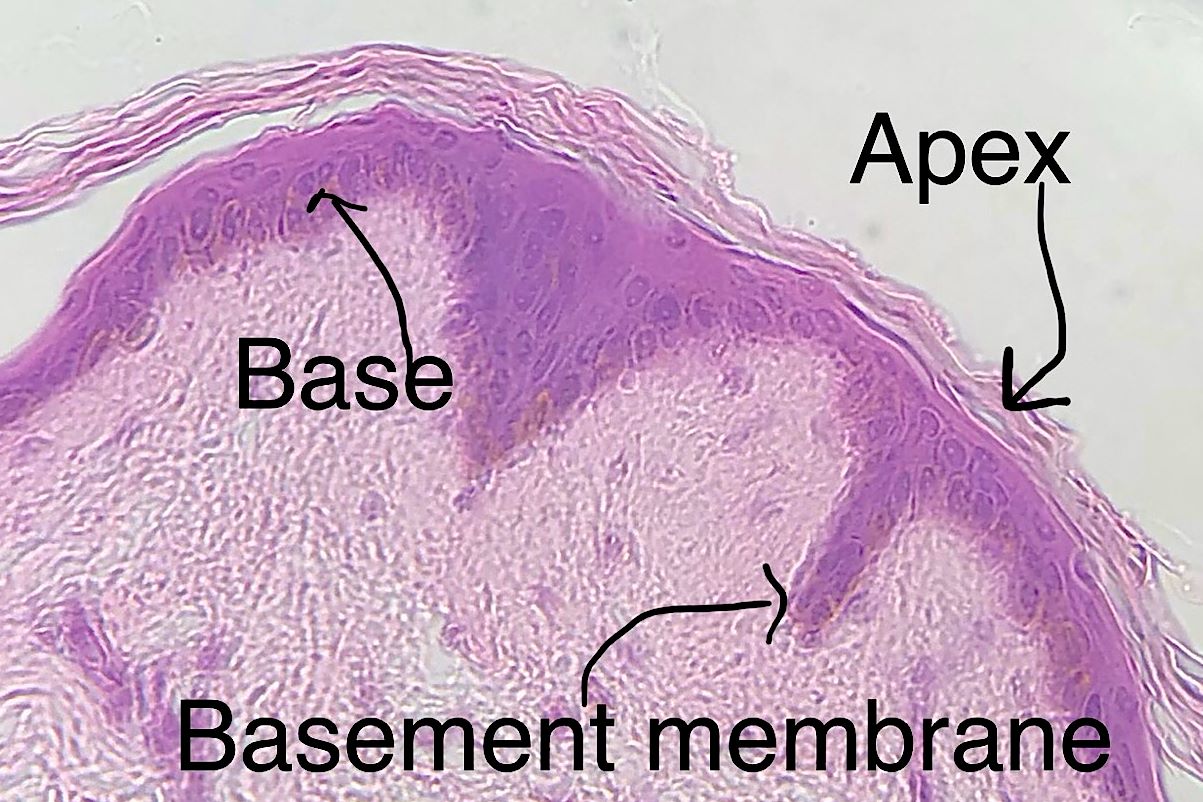
3/ 9
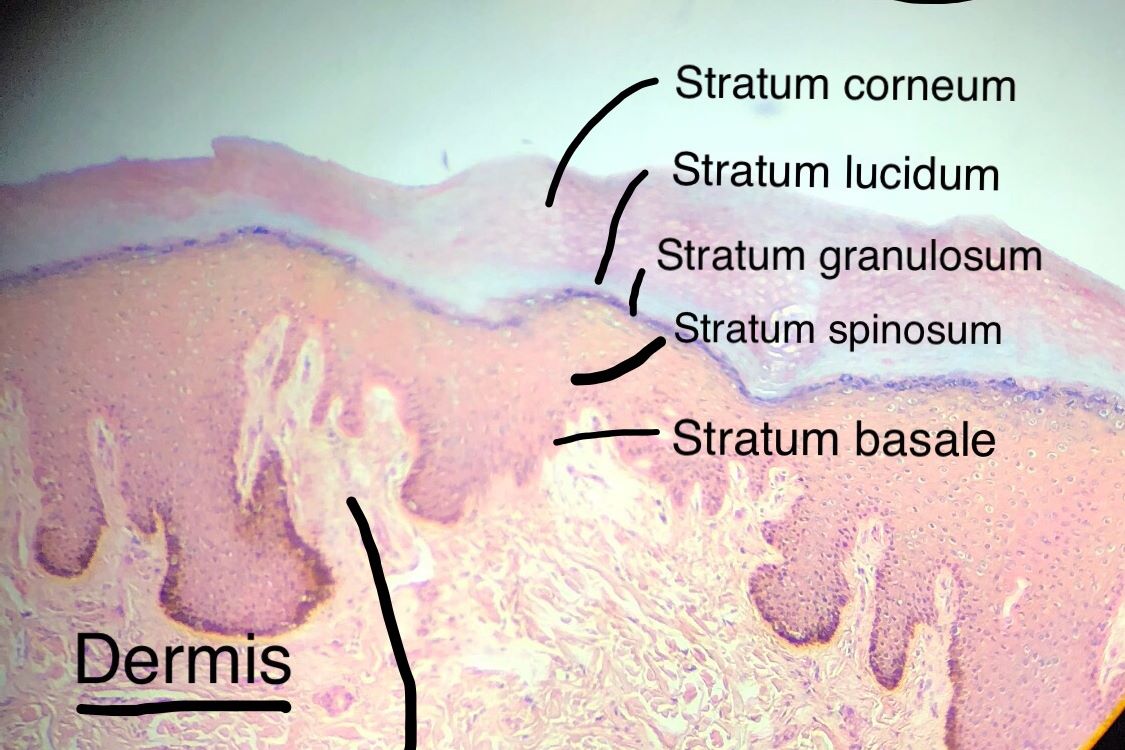
4 / 9

5 / 9
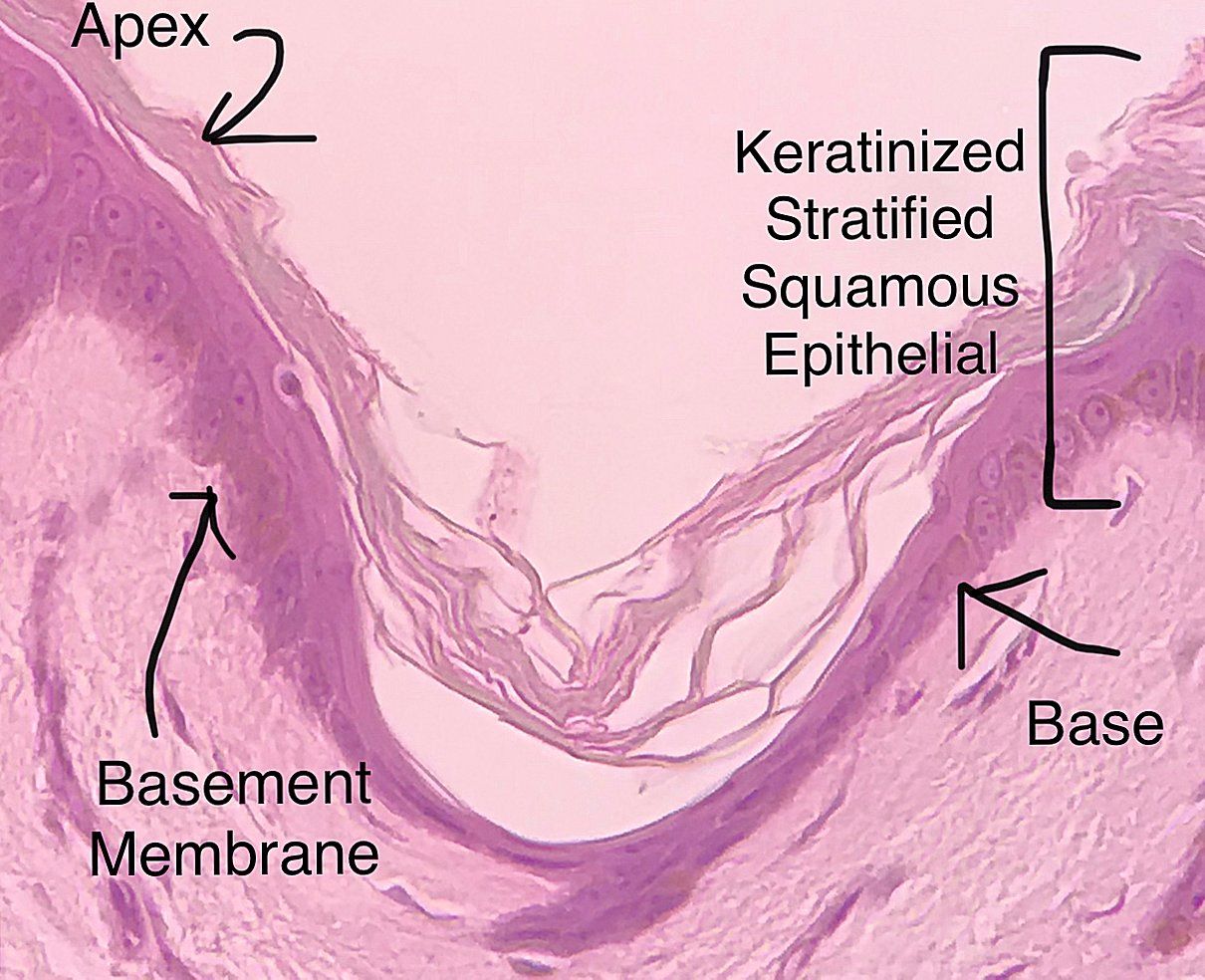
6 / 9

7 / 9
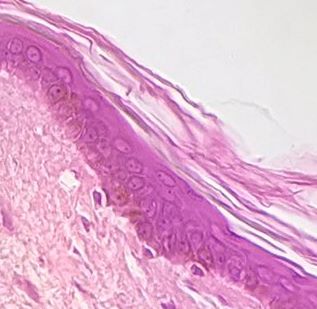
8 / 9
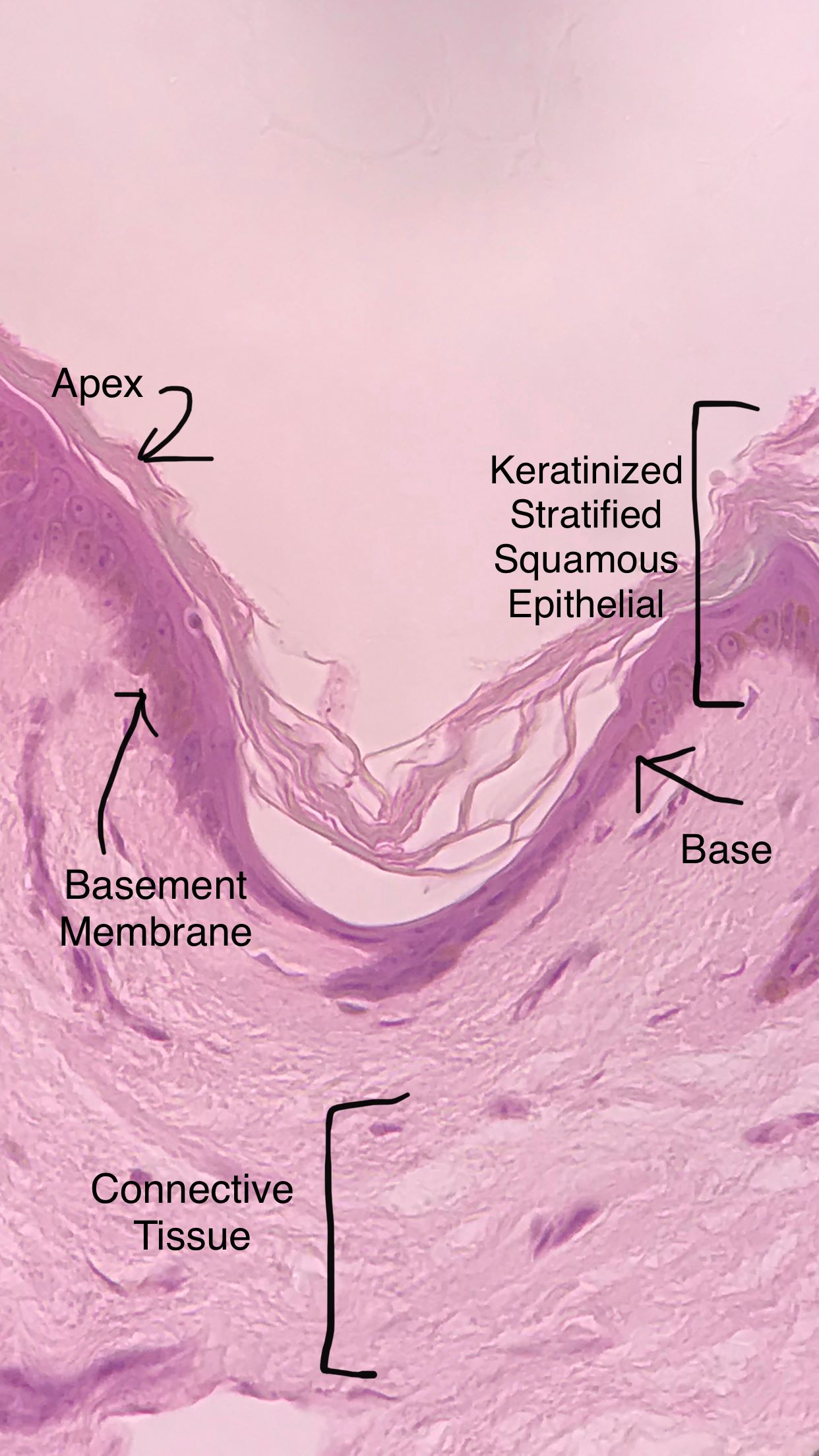
9 / 9

❮
❯
|

